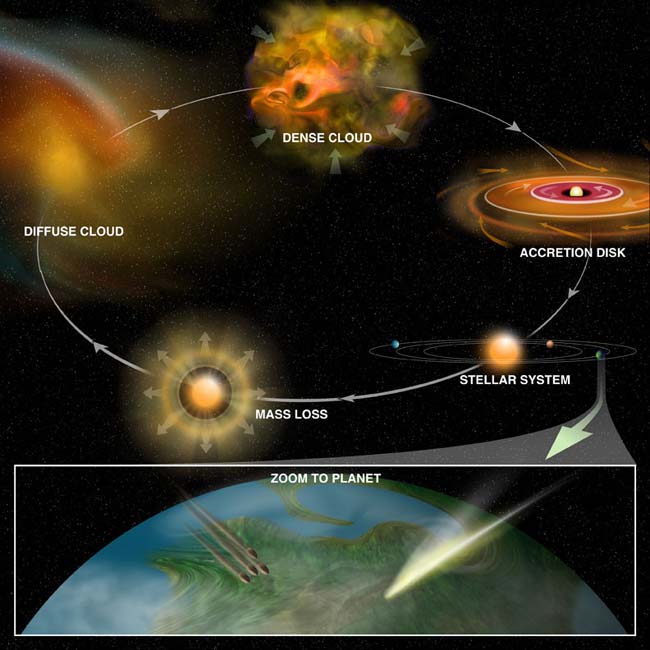Negative Discovery Proves Positive in Cosmic Search

Thediscovery of a long-sought molecule with a negative charge, the first-everpinpointed in the depths of interstellar space, may just be the tip of an icebergfor researchers studying the chemistry of the cosmos.
"It's kindof intoxicating because it's not just a solitary discovery," astronomer PatrickThaddeus, of the Harvard-Smithsonian Center for Astrophysics (CfA), told SPACE.com."It's opening up a whole avenue of study."
Known as ananion, the negatively charged molecule joins a hostof other molecules--130 neutral and 14 positively charged--known to exist ininterstellar space. Astronomers believe a simple hydrogen anion is continuouslyformed and destroyed in our nearby Sun,but had not found negatively-charged molecules elsewhere in the universe,Thaddeus added.
"We've spotteda rare and exotic species, like the white tiger of space," said CfA astronomerMichael McCarthy, who led the study, said in a statement.
Trackingdown molecules in space may sound as exciting as counting sand grains on abeach. But the search can yield a wealth of information on how the chemicalingredients so vital for life arise in the universe.
Earlierthis year, researchers found that a seriesof organic molecules important for life formed in the gas and dust cloudsthat later lead to stars and planets.
McCarthy,Thaddeus and their colleagues used the GreenBank Telescope to hunt down a large molecule--relatively speaking--known asC6H- in the gas shell of a red giant star sitting in the constellation Leo, as wellas in a cold molecular cloud in the Taurus constellation.
Get the Space.com Newsletter
Breaking space news, the latest updates on rocket launches, skywatching events and more!
In order topinpoint C6H-, which is a long chain of six carbon atoms attached to a hydrogenatom sporting an extraneous electron, McCarthy and his team identified itsradio signature on Earth, and thenused it as a template for comparison to space-based sources.
Thaddeussaid the research team has templates for three other negatively chargedmolecules and is itching to search for their space-based versions.
"It opensup the whole question of negative ions in interstellar space," Thaddeus added.
Theresearch was detailed in the Dec. 1 issue of The Astrophysical JournalLetters.
- Top 10 Star Mysteries
- Top 10 List of Habitable Stars to Guide Search
- Organic Molecules Found in Diverse Space Places
- Life-Building Carbon Rings Found in Space
- Components of Stars Prove the Delicacy of Life
- Are We All Aliens? The New Case for Panspermia
- Seeds of Life are Everywhere, NASA Researchers Say
Join our Space Forums to keep talking space on the latest missions, night sky and more! And if you have a news tip, correction or comment, let us know at: community@space.com.

Tariq is the Editor-in-Chief of Space.com and joined the team in 2001, first as an intern and staff writer, and later as an editor. He covers human spaceflight, exploration and space science, as well as skywatching and entertainment. He became Space.com's Managing Editor in 2009 and Editor-in-Chief in 2019. Before joining Space.com, Tariq was a staff reporter for The Los Angeles Times covering education and city beats in La Habra, Fullerton and Huntington Beach. In October 2022, Tariq received the Harry Kolcum Award for excellence in space reporting from the National Space Club Florida Committee. He is also an Eagle Scout (yes, he has the Space Exploration merit badge) and went to Space Camp four times as a kid and a fifth time as an adult. He has journalism degrees from the University of Southern California and New York University. You can find Tariq at Space.com and as the co-host to the This Week In Space podcast with space historian Rod Pyle on the TWiT network. To see his latest project, you can follow Tariq on Twitter @tariqjmalik.










